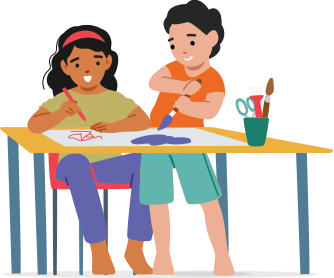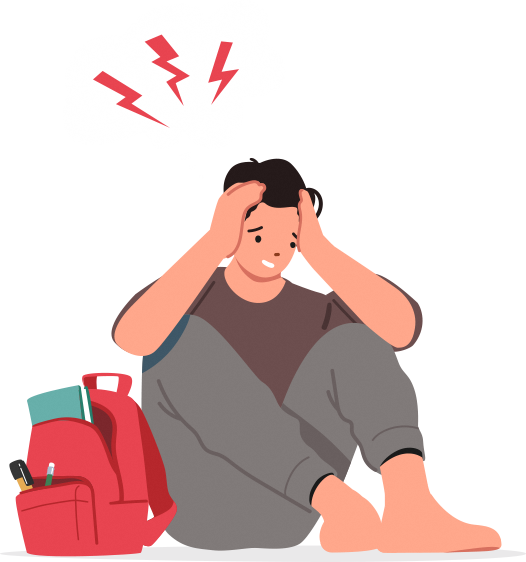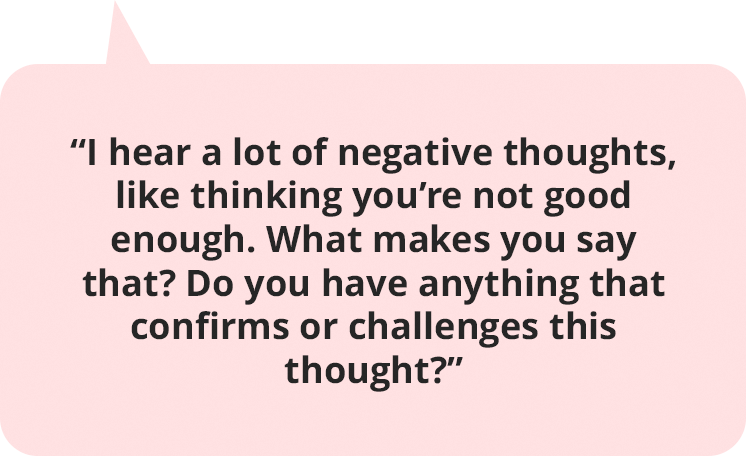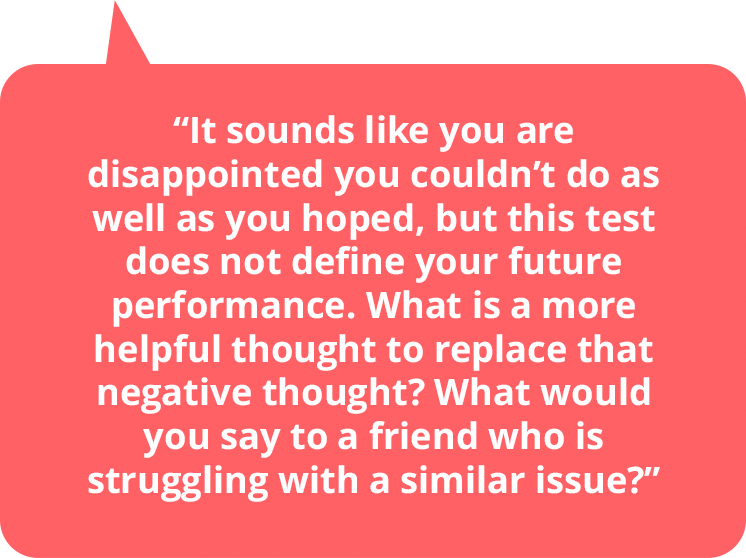How can you help your child cope with sadness or low moods?
Look out for signs of low moods and distress in your child.

For younger children:
These signs may be in the form of physical discomfort (e.g. stomach aches, headaches).

For older children:
These signs may be in the form of irritability.

Identifying signs of concern
If your child experiences sadness or low moods most of the time for more than two weeks, you can try the following and also seek professional help if necessary:

Make time to listen to your child and understand what they are experiencing
You can start by asking them what they are feeling
Let them know you are concerned and want to be there for them
Give them time and space to express themselves, and avoid passing judgement or offering advice too early; sometimes your child just needs a listening ear

Unhelpful thoughts are thoughts that may be untrue or biased and cause us to feel worse
Identify unhelpful thoughts by exploring with your child whether their thoughts about a distressing situation are true and if there could be other explanations for the situation
For example, if your child expresses that they can never do well for their exams again because they failed their recent class test, acknowledge their thoughts and feelings, then guide them to challenge those thoughts
You can respond by saying:

Replace unhelpful thoughts with helpful thoughts, such as what they have learnt and how they can grow from their experience
For example, you can say:

You can also explore with your child ways to solve the problem or make things better

Helping your child to manage their feelings appropriately

Schedule time for your child to do things they enjoy
This can include spending time with friends and family, or playing and walking outdoors in a park
Although engaging in activities may sometimes be hard for your child to do, especially if they are feeling really down, reassure them that they will feel better once they get started


